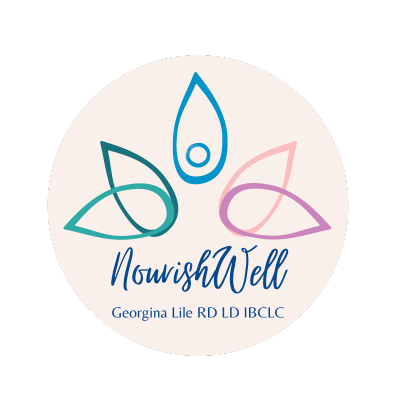What is Nipple Confusion?
Nipple confusion refers to difficulty switching from a bottle or pacifier to the breast before breastfeeding is well established. It can lead to a preference for the bottle and breast refusal. Breastfeeding efficiently is a learned skill. It requires practice like anything else that we humans learn to do. Each time a baby breastfeeds, they are reinforcing motor muscle memory and developing tongue and jaw movements that are unique to breastfeeding. Those muscles get stronger over time and breastfeeding becomes more efficient.
Bottle drinking and pacifier use develop different oral skills that can make learning to breastfeed more difficult. There is less jaw and tongue movement and less coordination among different muscles of the mouth. Babies latch differently onto the breast versus the bottle. Babies move towards the breast in contrast to the bottle coming to them to initiate a feeding. This is a distinct difference in latching. Babies learn to gape widely to latch onto the breast and make big jaw excursions, while bottle feeding maintains a tight jaw. Drinking from the breast and bottle require different motions and mobility of the tongue. Early introduction of the bottle can interfere with learning breastfeeding behaviors and moving milk efficiently. It can also contribute to a painful latch.
Switching back and forth between breast and bottle before the baby has mastered breastfeeding is likely to cause a baby to develop a preference for the bottle. Many studies have shown that early bottle feeding is associated with premature weaning from the breast. This is partly because task-switching while one is still learning a new task is difficult and interferes with learning the more difficult task.
A good analogy for this is the introduction of a cup. A six month old baby that is handed a sippy cup may lift the cup to their mouth, but doesn’t quite know how far to tip the cup back or how to move his tongue to extract the liquid from that particular lid. It takes time for babies to become efficient at drinking out of a sippy cup, but after a few weeks of practice, it is much easier. If you were to introduce a different style of sippy cup, the baby would be a bit confused and would need more practice to figure out how to use this new style of cup.
The other issue is that babies get immediate positive feedback when the bottle provides them with a fast flow of milk from each suck. They associate the feel of a bottle nipple with immediately receiving lots of milk. Breastfed babies have to wait for an initial let-down and after that milk ejection is complete, the milk comes out more slowly until the next let-down takes place. Many babies that have been exposed to bottles too early will grow impatient waiting for let-downs and reject the breast.
What about those moms that tell you that they had no problem switching back and forth between breast and bottle right away? Some babies have fewer issues with task switching, but studies tell us that about 50% of babies introduced to the bottle in the early weeks will reject the breast. Every baby is different and every set of breasts are different. Tongue ties, high palates, large or flattish nipples,and excessive engorgement are a few issues that may make breastfeeding a bit more difficult to master and likely more prone to bottle preference.
The best time to introduce a bottle and avoid bottle preference seems to be after the baby is 3-4 weeks old. Most babies are well practiced and more effective at removing milk by this time, but bottle flow preference and breast refusal can continue to be a problem even with babies that have mastered breastfeeding. Use paced bottle feeding methods to avoid bottle flow preference. If your baby needs to be supplemented before breastfeeding is going well, try cup feeding or finger feeding. Cup feeding seems to have less impact on learning to breastfeed and finger feeding can help train the baby to suck appropriately at the breast. If you reach 3-4 weeks and you are struggling with latch or have any problems with breastfeeding, it is best to introduce the bottle after problems are resolved. Ask for breastfeeding help from an IBCLC.
GEORGINA LILE IS AN IN-NETWORK PROVIDER FOR AETNA
Many Aetna plans cover up to 6 visits with a lactation consultant if you need support with breastfeeding or a prenatal breastfeeding class; with no out-of-pocket cost to you.
During the Covid-19 pandemic, Aetna is covering virtual lactation care from an in-network provider like myself at no cost to you.
She also accepts some Blue Cross Blue Shield, Cigna and United Plans through Lactation Network. Coverage varies.
